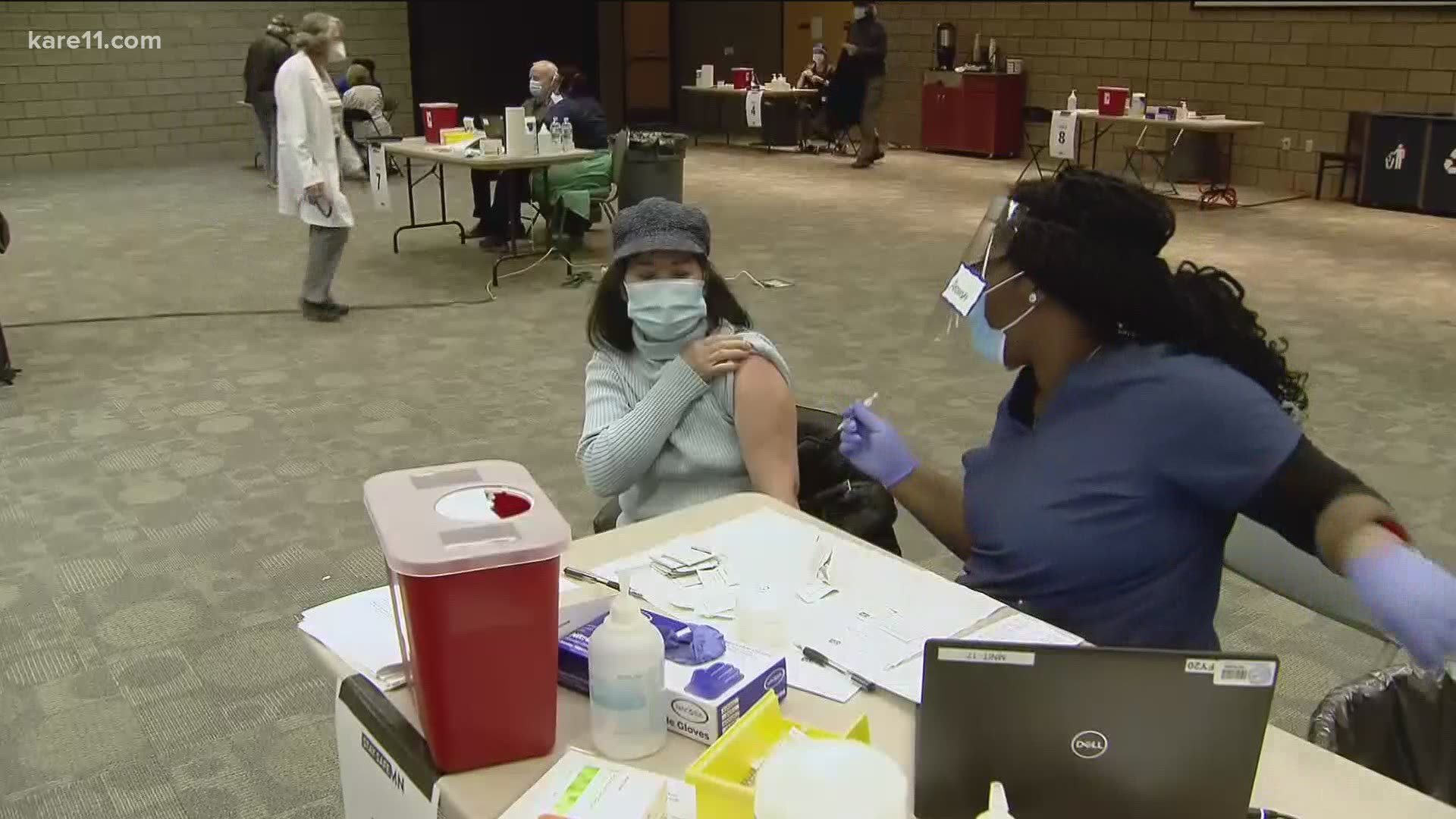More than 447,610 people have now received at least one dose of the COVID vaccine in Minnesota, but recent data released by the CDC shows racial disparities when it comes to who’s getting vaccinated.
“I have friends who have called me, who are over 65, they say they can’t get in,” says Shirlynn LaChapelle, a local nurse practitioner. “They ask me, “how do you get a vaccine, how do you get the shot,” she says.
LaChappelle says she’s seen the disparities firsthand at local vaccination sites. “We did 1,200 vaccinations that day, I saw only five Black people and that was in Brooklyn Center where a large proportion of Black people live, right near north Minneapolis,” she says.
According to data from the Kaiser Family Foundation, vaccinations among Black and Hispanic people are lower compared to their shares of the total population in 17 reporting states and two cities.
Although experts say it’s still early in the vaccination process.
“One, there’s a vaccine hesitancy issue; we’ve seen this nationally, we’re seeing this locally,” says Abe Jacob, with M Health Fairview. “Two, access to computers and access to IT systems, another is language when a lot of our systems are in the English language.”
Also, adequate transportation and meeting people in the communities where they live to make vaccines more accessible. “We are already starting to identify ways that we can better and proactively address some of the vaccine disparities that we knew would be a problem,” says Jacob.
President Joe Biden recently announced plans for a new vaccine initiative that would set up vaccination centers in high-risk neighborhoods, underserved areas, and ensure high risk facilities such as jails and homeless shelters have access to the vaccine.
Now, LaChapelle says more needs to be done to make sure those most at risk for COVID-19 are getting vaccinated. “After looking at this from several vantage points, if they really want to end the disparity in these vaccinations... require a set aside,” she says. “I know people hate the term set aside, but if you don’t do that, people from every suburb will come in, and the people in the neighborhood will never be serviced.”

